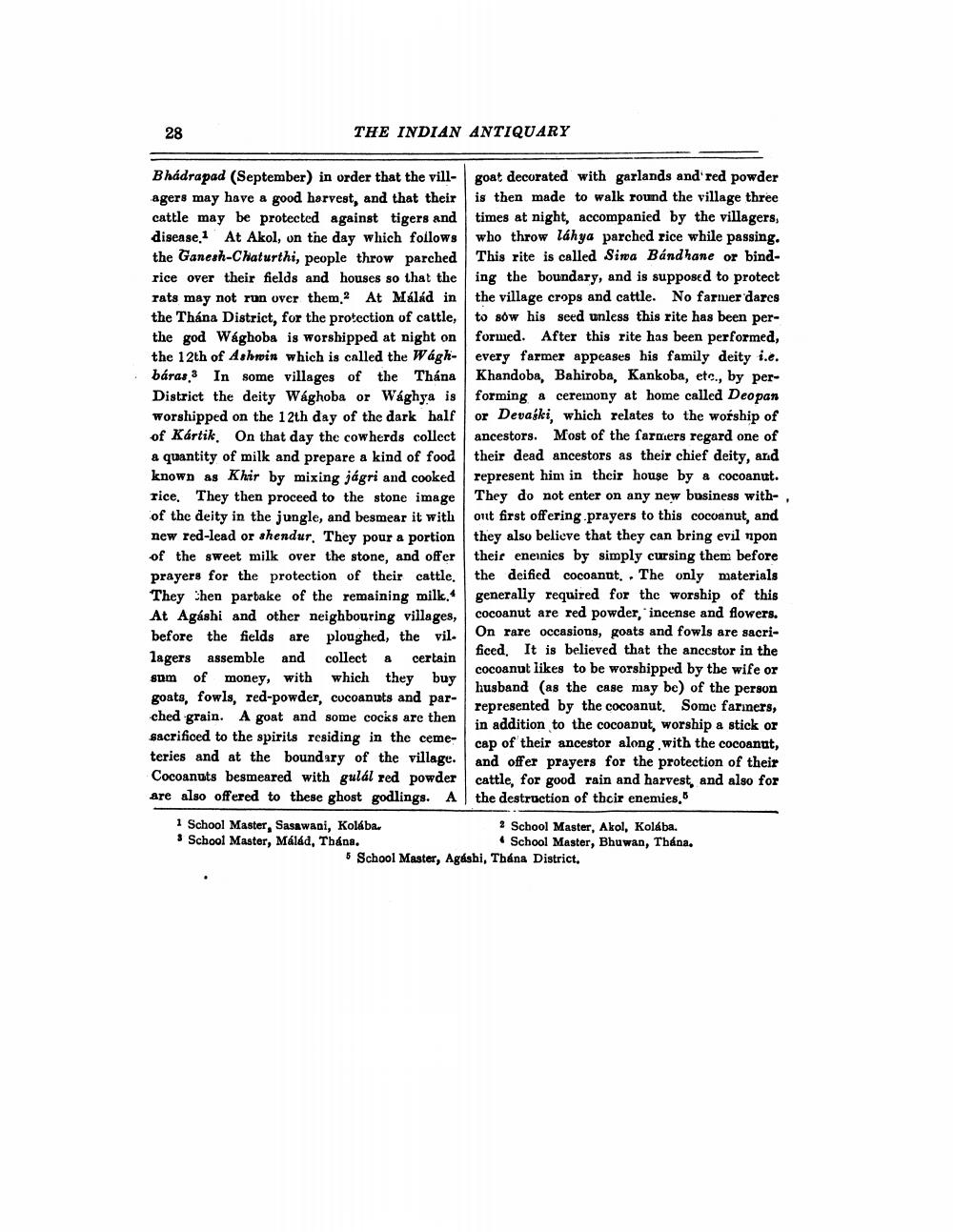________________
28
THE INDIAN ANTIQUARY
Bhadrapad (September) in order that the vill- goat decorated with garlands and red powder agers may have a good harvest, and that their is then made to walk round the village three cattle may be protected against tigers and times at night, accompanied by the villagers, disease,1 At Akol, on the day which follows who throw láhya parched rice while passing. the Ganesh Chaturthi, people throw parched This rite is called Sima Bandhane or bindrice over their fields and houses so that the ing the boundary, and is supposed to protect rats may not run over them. At Málád in the village crops and cattle. No farner dares the Thána District, for the protection of cattle, to sow his seed unless this rite has been perthe god Wághoba is worshipped at night on formed. After this rite has been performed, the 12th of Ashwin which is called the Wágh- every farmer appeases his family deity i.e. báras 3 In some villages of the Thána Khandoba, Bahiroba, Kankoba, etc., by perDistrict the deity Wághoba or Wághya is forming a ceremony at home called Deopan worshipped on the 12th day of the dark half or Devaski, which relates to the worship of of Kártik. On that day the cowherds collect ancestors. Most of the farmers regard one of a quantity of milk and prepare a kind of food their dead ancestors as their chief deity, and known as Khir by mixing jágri and cooked represent him in their house by a cocoanut. Tice. They then proceed to the stone image They do not enter on any new business withof the deity in the jungle, and besmear it without first offering prayers to this cocoanut, and new red-lead or shendur. They pour a portion they also believe that they can bring evil npon of the sweet milk over the stone, and offer their eneinies by simply cursing them before prayers for the protection of their cattle. the deified cocoanut. . The only materials They Shen partake of the remaining milk.4 generally required for the worship of this At Agáshi and other neighbouring villages,
cocoanut are red powder, incense and flowers. before the fields are ploughed, the vil.
On rare occasions, goats and fowls are sacri
ficed. lagers assemble and collect a certain
It is believed that the ancestor in the sum of money, with
cocoanut likes to be worshipped by the wife or which they buy
husband (as the case may be) of the person goats, fowls, red-powder, cucoanuts and par
represented by the cocoanut. Some fariners, ched grain. A goat and some cocks are then
in addition to the cocoanut, worship a stick or sacrificed to the spirits residing in the ceme
cap of their ancestor along with the cocoanut, teries and at the boundary of the village. and offer prayers for the protection of their Cocoanuts besmeared with gulál red powder cattle for good rain and harvest, and also for are also offered to these ghost godlings. A the destruction of thcir enemies, 1 School Master, Sasawani, Kolába.
2 School Master, Akol, Kolába. 3 School Master, Málad, Thána.
School Master, Bhuwan, Thána. 5 School Master, Agáshi, Thána District,




